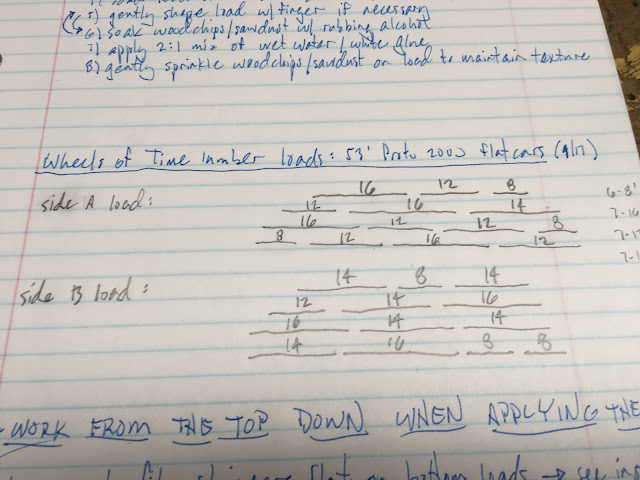With the recent completion of two more Northeastern style cabooses, there are finally enough cabooses on the railroad to supply all of the trains and have a few left on the caboose tracks at North Pierce and Nelsonville at any point in time. The new additions have also allowed me to retire the only bay window caboose on the railroad. It's been a long time in coming, and I tried to retire it once before. But the addition of a few new trains caused it to come back into service. Now, finally, it's headed to the display case.
The inspiration for this caboose was the CA-11 kit-bash that Eric Brooman did for the Utah Belt many years ago. An article appeared in the July 1983 Railroad Model Craftsman in which he detailed how he constructed his cabooses using Athearn's Blue Box bay window caboose. I had completed three extensive modifications of Athearn's wide vision caboose by this time and had decided that the most modern cabooses on the railroad would be of the bay window design. And this would fall in line with what the Chessie System had done in the mid-1970's.
I started by removing all of the cast-on detail from the shell. Next, I salvaged windows from a few of the wide vision shells and inserted them in the bay window shell. I wanted a unique design and changing the windows, in the same fashion as I had done on the wide vision cabooses, seemed like the ticket. Most of the original windows were filled with scraps of styrene and sanded smooth. Unfortunately, I didn't spend as much time with the Squadron Green putty as I should have and you can see some of the joints.
I fashioned new end railings out of brass wire and pieces of plastic and added wire grab irons all around. Additional details were added to bring the car up to the standards of the other cabooses.
Alas, this car was completed at a time when I was really struggling to get a good gloss surface with my airbrush. As a result, the decals are a mess. The numbers didn't turn out too bad because they are dry transfers.
I never really warmed up to the overall design of this caboose, and given the decal job, I'm happy to be relegating it to the display case. Who knows- there may yet be a modern bay-window caboose on the roster as I still like the concept. But for now, I'm waiting for the inspiration to come around like it did the last time.











